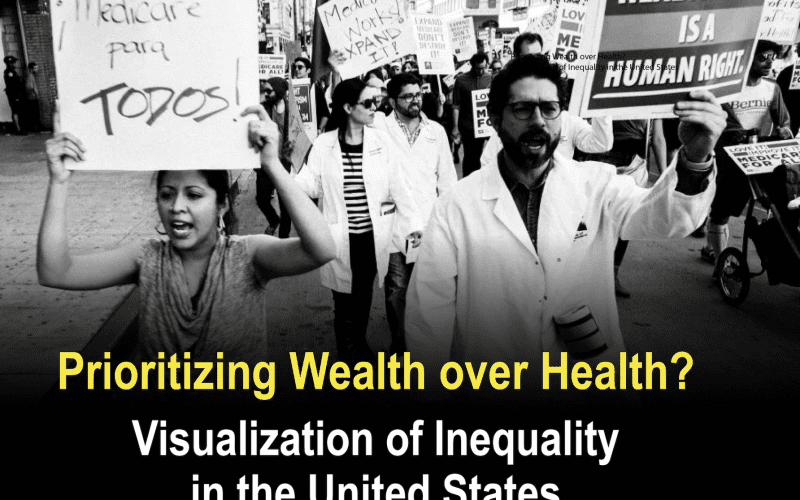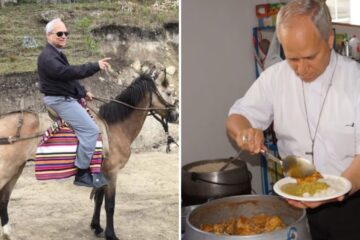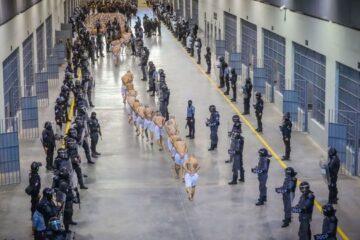By Yenny Delgado
In addressing COVID-19, governments around the world began to close borders, stop flights, and placed the military on the street to force individuals to shelter in place. These efforts were not sufficient in the United States because the virus had already arrived – no amount of military force would stop its spread. Coronavirus had already reached the continent, crossed the vast oceans, and it did not come from impoverished immigrants or refugees, but from individuals that had traveled the world on vacation or for business in planes and cruise ship.
Currently, in the United States, more people have died from the pandemic then had been killed in the Vietnam War, the attacks on September 11th, and Afghanistan War combined. As of Tuesday, May 12, 2020, 1,351,248 individuals have been infected, and the virus had claimed the lives of over 80,900 people according to the Johns Hopkins University Coronavirus Resource Center. In under six months, COVID-19 has spread from one province in China to almost every nation in the world. The virus affects the respiratory systems, and in the most extreme conditions, individuals need to be intubated with ventilators to sustain life. Most distressing about the virus and the outbreak was the ability for individuals to be asymptomatic spreaders of the disease without showing any signs of illness. Individuals could appear perfectly well and pass temperature checks, all while spreading the virus to others.
Virus Exposing Inequality in the Country
The media narrative at the start of the outbreak was that the virus did not discriminate. Everyone embraced the idea of single humanity and how everyone is susceptible to the infection regardless of gender or ethnicity. We were all scared together; without being aware that was not the full truth. However, individuals living in poverty first began to notice everything was not the same. Though everyone was on the same ship, all the people were not on the same level.
The impoverished, as well as African American, Native American, and immigrants communities, were beginning to see the impacts of death face to face just as the elderly had. Reporters and citizens began to notice the disparities in deaths as data emerged from the epicenter of the virus in New York City showed an overrepresentation of African-descendants in the number of people being hospitalized as a result of the illness as reported by the U.S. Center for Disease Control and Prevention. The disease exacerbated critical situations in minority populations and communities that are still suffering from the impacts of U.S. government policy in terms of providing housing loans to individuals who were not of European descent.
COVID-19 showed its face of death, focusing primarily on the elderly and on communities that were considered «essential workers.» Instantly the doctors and nurses who treated patients were hailed as hero’s while, slowly, the country began to see that all individuals forced to work were not necessarily heroes but sacrificed so that the country could continue «open.» Bus drivers, grocery store workers, gas attendants, farmworkers, meat processors, factory workers, and fast-food employees make up some of the least paid individuals in the U.S. economy. However, individuals in these professions were on the front line in terms of exposure to the virus and risk. In the capitalist society, the same people who worked 12 to 14 hours are the same who living check by check; they make less what they need to pay the rent, food, supplies, etc.
Prioritizing Wealth over Health
With the absolute number of individuals infected in the country growing daily, the strain on the health care infrastructure has been profound. The shortages of personal protective equipment, ventilators, and necessary materials have pointed a spotlight directly at the severe underfunding and mixed public/private nature of health coverage in the country. What is unclear, however, is if people understand that there is no public health care system in the United States.
Unlike some of the most impoverished countries in the world that have basic public health coverage, the majority of individuals in the United States have private plans.Citizens pay monthly premiums to private companies and health management organizations to provide their coverage. So, in the “land of the free and home of the brave” – citizens do not have basic health coverage. The inability to provide primary coverage has a long history in ideas of both the free market, fears of socialism, as well as racism. However, in the current pandemic, the country failed to provide basic health coverage to critically ill and protection to those who provide healthcare on the frontline.
As the pandemic emerged and the guidance from the Trump administration was mixed at best, individual states and Governors began to fill the void and provide information specific to their state. Government reports showed a lack of preparation for the oncoming crisis and despair for the loss of life and especially for the drops in the economy. The shuttering of the economy has led to a loss of over 30 million jobs since the start of March. The economic losses lead to the Lieutenant Governor of Texas to declare, «Those of us who are 70 plus, we’ll take care of ourselves. But don’t sacrifice the country.”The impassioned plea to restart the economy, at the risk of those who are older or medically vulnerable, shows firsthand how the governing class of the country sees the governed – objects to be utilized for the growth and benefit of the economy.
So, the first thing they looked for is to save the economy, the bills began to be signed, and the injection of money went more to corporations than citizens. Meanwhile, every 12 minutes in New York City, a COVID-19 person dies.
Racism Emerges Once Again
While the majority of the world were under orders to shelter in place and mandatory quarantines to control the virus – small segments of mostly white protesters believed the measures impinged on their freedoms and rights. The primarily white protesters adorned with Make America Great Again paraphernalia (a hallmark of Donald Trump’s 2016 Presidential Campaign) protested orders that were designed mainly to ensure their and others’ safety. The protests were a mixture of supporters of the President, gun rights enthusiast, and Tea Party Activist. In Michigan, armed protestors violated social distancing norms to protest in a clear juxtaposition of how overweight white men can carry guns in contradiction of social guidance. At the same time, police officers arrest black individuals for peacefully protesting.
To portray control and authority, President Trump began to have daily COVID-19 press briefings. The briefings provided some information to the press and public but often devolved into the meandering thoughts of a white septuagenarian with notable musing that portray a lack of understanding at best to a callous disregard for life at the worst:
- “We cannot let the cure be worse then the problem itself.”
- “Injection of Clorox is possible to help combat the virus.»
- «We did the right thing. Everything we did was right.»
Another very negative aspect of the COVID-19 pandemic has been the rise in hate crimes against individuals of Asian ancestry. Likely due to the inflammatory language from the administration and specific news sources, there has been a dramatic rise in anti-Asian racism.
We must look at the current inequalities by reflecting on what is happening right now during this pandemic. The quarantine is providing opportunities for individuals to realize they are in a position of privilege. Many millions of households are unable to telework in their jobs, and not working is equivalent to hunger due to the inability to pay bills, rent, or health cover. Some people may think it is because the system is broken or rigged. However, the system works well for the privileged few, while the remainder of society is sacrificed for the economy. Indeed, the wealthy are becoming more prosperous as a result of this pandemic – while the poor are becoming poorer.
Inequality in the United States is not new; indeed, it is ingrained into the founding of the country and through over 400 years of history. However, in moments of crisis and pandemics, societies have the opportunity to reorient and reprioritize values, and the re-visualization of inequality here may be to lead to real change. For this to occur, we must honestly analyze not only the current virus response – but also the structuring of society.
For decades the economic system of the country has continued to extend the wealth gap. The unemployment rate in April reached 20% , and it is estimated that millions more are losing their jobs. Under this situation, millions also suffer health coverage from their employers and enter the group of unprotected, without health insurance, and with possibilities of becoming infected with COVID 19. What hope can they have? The Trump administration has failed and will continue to do so as long as it only supports corporations and conservative evangelical church leaders that support his re-election campaign.




